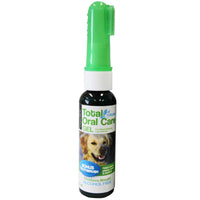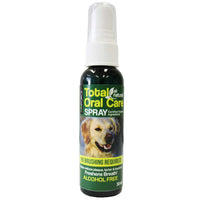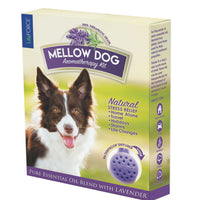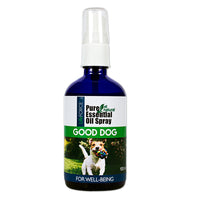
Taking steps to minimize tick exposure is the best way to protect your canine companion from Lyme disease.
It doesn’t seem that long since we could walk our dogs through woods and fields without a care in the world. But ticks and the risk of Lyme disease have changed all that. Once upon a time, these little devils would show up only infrequently. Now, depending on where you live, it’s almost certain that any dog travelling through grassy or wooded areas will come inside with one or more ticks on his skin, along with the potential risk of Lyme disease. Once a rarity, Lyme is steadily and significantly on the rise. All dog owners need to be very aware of it, and take steps to prevent it.
What are the symptoms?
The symptoms of Lyme can be varied. According to veterinarian Dr. Kenton Rexford, who practices in Pittsburgh, Pennsylvania, the most common signs are fever, fatigue, and lameness due to joint pain. He adds that the inflammation can transfer from leg to leg, making it very confusing for owners trying to assess the problem. The biggest issue, however, is the kidney failure that can occur with Lyme disease. “Dogs with long-term or uncontrolled infection can experience Lyme nephritis,” says Dr. Rexford, adding that this almost always culminates in death.
The most common signs of Lyme are fever,
fatigue, and lameness due to joint pain.
Diagnosing and treating Lyme disease
How do you find out if your dog may have contracted Lyme disease? First, keep in mind that just because your dog has been bitten by a tick, it does not necessarily mean he has contracted Lyme. However, it is still important to have your dog checked by a veterinarian if you suspect he has been bitten. “There are different tests for Lyme disease, and they give us different types of information,” says Dr. Rexford. “A test called 4Dx can be performed in-hospital and tells us if a pet has been exposed to Lyme. However, exposure alone does not mean your pet is infected. A Lyme C6 Antigen Test will reveal if your dog has an active infection.” If a dog is taken to a veterinarian with the symptoms of Lyme, and the initial blood test confirms that exposure has occurred, Dr. Rexford says that it is wise to treat the animal as if he has Lyme.
Conventional treatment usually involves antibiotics. A natural approach can include homeopathic remedies, but it’s vital to work with a holistic or integrative veterinarian who is knowledgeable and experienced in homeopathy. In either case, prompt diagnosis is important for effective treatment.
Prevention is the key
Dr. Rexford believes that prevention is the best approach to Lyme disease.
- A variety of natural repellents will help protect your dog from contracting this disease and spare him from a lifetime of issues. Many of the essential oils that repel fleas and mosquitoes will also repel ticks, and include lavender, tea tree, eucalyptus, cedar, geranium, peppermint and rosemary. If you’re going to make your own repellents, be very sure you are buying high quality oils and only use a few drops in a spray bottle of water for your dog’s coat. Cheap, poor quality oils can be adulterated and may be toxic if your dog ingests them.
- Even the best repellents aren’t 100% foolproof. After every outing, therefore, even if your dog has just been in the backyard, it’s a good idea to check him over for ticks. Search all over his body, but especially his neck, belly, and in his ears. Yes, this is time-consuming, but remind yourself that it can prevent major problems.
- Avoid overgrown areas where long grasses and weeds predominate. When out hiking with your dog, stick to well-maintained trails and don’t let him run through the brush.
After every outing, even if your dog has just been in the backyard, it’s a good idea to check him over for ticks.
What if I find a tick?
If you discover a tick on your dog, the best thing to do is remove it without disturbing it or separating the body from the head. There are a great many excellent tools on the market today that work very well for this task. Tweezers, the age-old method, aren’t usually the most effective for a clean tick removal.
When removing a tick, it’s important not to cause more pain or potential infection for the dog than he may already have experienced. “I’ve seen the results of owners digging into the skin trying to get the mouth parts of ticks out, and they end up causing much more of a problem than the tick did,” says veterinarian Dr. Doug Kneuven. If you feel uncomfortable removing a tick from your dog, your vet will be more than willing to assist with the process, or teach you the proper way to do it. Just keep in mind that ticks only take around 24 hours to transmit Lyme disease, so they should be removed as soon as possible upon discovery.
Where is Lyme disease most prevalent?
The incidence of Lyme disease changes with location. For example, Dr. Rexford states that the rate of infection has exploded in his state. “In the past ten years or so, Lyme and other tick-borne diseases have become a major problem in our area,” he says. “The black-legged tick, which can carry Lyme disease, never used to live in southwestern Pennsylvania. But now, they are here in huge numbers. In 2016, in fact, Pennsylvania was the number one state for new Lyme infections in humans.”
But Lyme disease isn’t restricted to Pennsylvania. Those living through the northeast US, as well as southern Ontario and the southern Maritimes in Canada, need to be especially vigilant about ticks and Lyme disease. According to the Centers for Disease Control and Prevention, Lyme disease is most prevalent in the northeastern coastal states. North of the border, the regions of southern Ontario along Lakes Erie and Ontario are in the red zone.
In recent years, ticks have given most dog lovers more to worry about when it comes to protecting their four-legged friends from harm. But that doesn’t mean staying indoors when the warm weather returns. With the correct knowledge, prevention steps, regular checkups and prompt treatment if needed, you and your dog can still enjoy your walks together.
Reprinted with permission of Animal Wellness Magazine
About the author:























